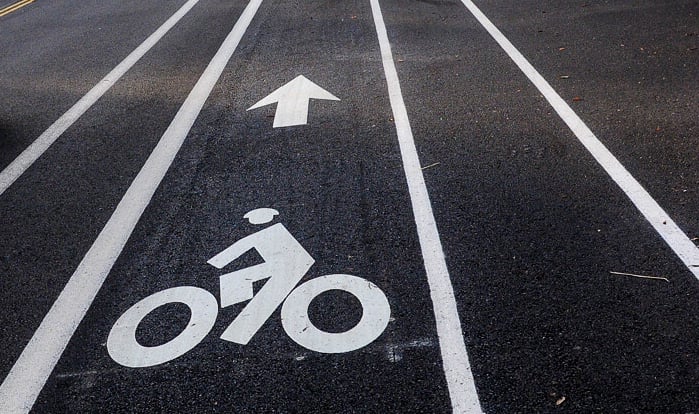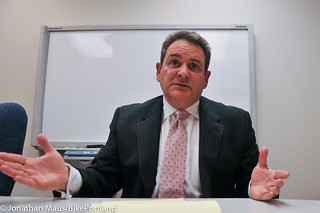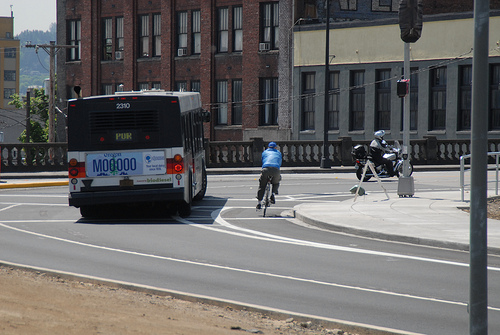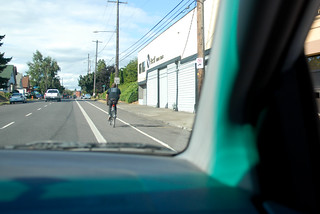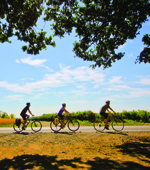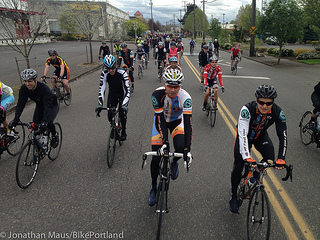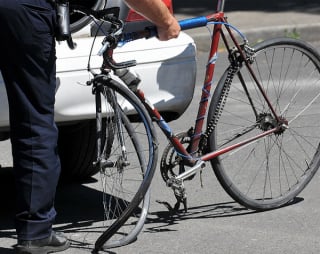
(Photo by J. Maus/BikePortland)
(Publisher’s Note: We’ve split this article into two parts because Ray is an authority on this topic and he gets into some important details. Come back tomorrow for the finale. Also worth mentioning is that Ray’s firm, Swanson, Thomas, Coon & Newton, is a BikePortland advertiser and this column is part of our partnership. — Jonathan)
I. Introduction
Sometimes it’s tough to get fair treatment when a collision results in property damage but no personal injury. While it’s always better not to have to deal with a physical injury, there is not enough money involved from the contingent fee (1/3) on a property damage case for most lawyers to even justify opening a file, so most riders end up representing themselves. If you are going to go it alone it helps to know the lay of the land before you start. This article contains an overview of the law of property damage and some tips on how to get a fair amount for your damaged ride.
Fortunately, most bicycle collisions do not result in personal injuries. Instead, wheels get bent, helmets scraped and, if the accident is the motorist’s fault, a “property damage” claim is made against an insurance company. For bicyclists, property damage claims can be frustrating because they typically have little or no experience in legal matters and find themselves advocating for damages with experienced claims adjusters. Since the amount involved is usually small, the bicyclist ends up appealing to the claims adjuster’s sense of fairness. Most claims adjusters are not experienced riders and they are frequently shocked by the costs of bicycle repair and parts.


